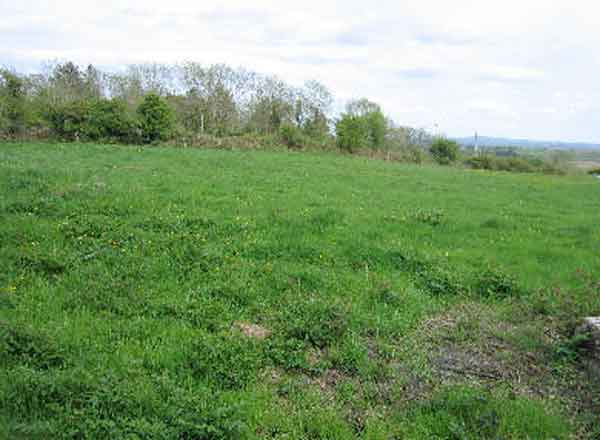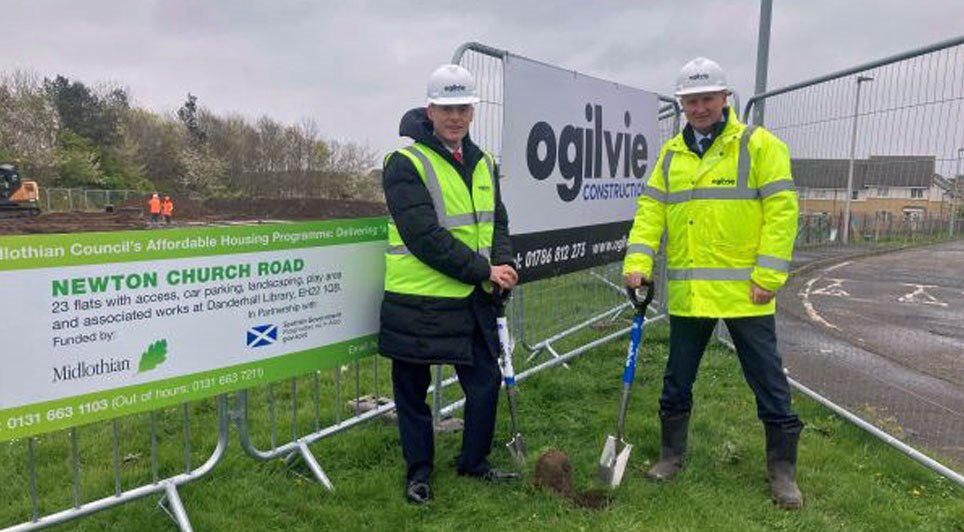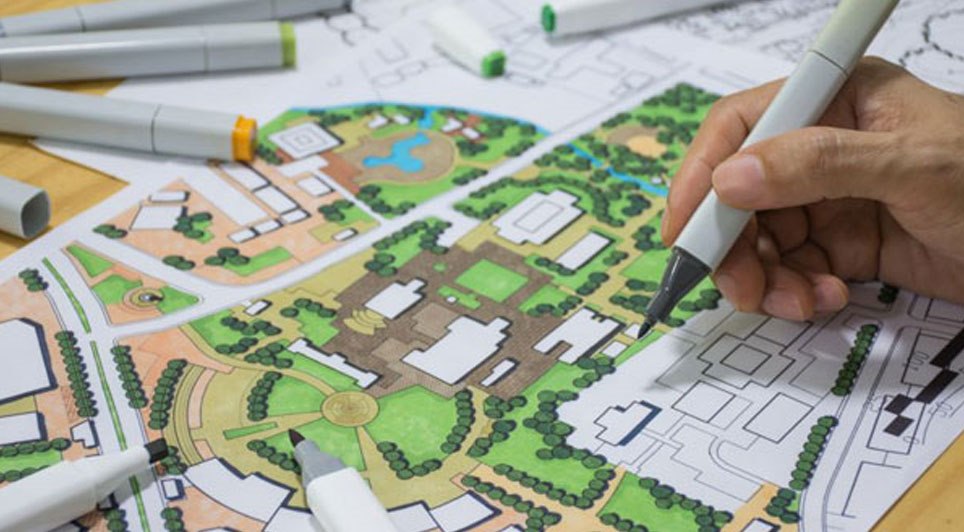The total amount of derelict and urban vacant land in Scotland has decreased by 716 hectares (6%) in the latest year, from 11,753 hectares in 2017 to 11,037 hectares in 2018.
That's according to the latest annual statistics on the extent of vacant and derelict land in Scotland, published by Scotland's Chief Statistician.
Data from the 2018 Scottish Vacant and Derelict Land Survey also showed that of the 11,037 hectares of derelict and urban vacant land recorded in the 2018 survey 1,992 hectares (18%) were classified as urban vacant and 9,044 hectares (82%) were classified as derelict.
The net decrease of 716 hectares (6%) between 2017 and 2018 is the result of 350 hectares being brought back into use, 632 hectares recorded as naturalised (including 561 hectares of former open cast coal sites in East Ayrshire where restoration schemes are now complete), the addition of 187 hectares in new sites and a net increase of 79 hectares as a result of changes to existing sites and removal of sites that do not meet the required definitions.
Five authorities have more than 1,000 hectares of derelict and urban vacant land. East Ayrshire has the largest area (1,810 hectares), 16% of the Scotland total. Glasgow City has the largest area of the City Authorities (1,005 hectares), 9% of the Scotland Total.
The total amount of derelict and urban vacant land has decreased each year between 2012 and 2018 except for 2014 when there was an increase of 2,091 hectares compared to 2013, largely due to over 2,200 hectares of former surface coal mine sites in East Ayrshire that had become derelict following the liquidation of Scottish Coal and ATH Resources in 2013.
The total amount of derelict and urban vacant land in Scotland has shown a net decrease of 3% since 2012 (from 11,342 hectares in 2012 to 11,037 hectares in 2018). Excluding derelict mineral sites, the total amount of derelict and urban vacant land has decreased from 9,413 hectares in 2012 to 7,973 hectares in 2018 (15% decrease).
For those sites where the previous use is known, 29% of derelict and urban vacant land had been previously used for mineral activity (3,080 hectares), 20% for manufacturing (2,137 hectares) and a further 12% for defence (1,270 hectares). For urban vacant land, where previous use is known, the largest area was previously in residential use (16%, 279 hectares). For derelict land the largest area with a known use had a previous use for mineral activity (35%, 3,064 hectares). 79% of derelict and urban vacant land, where the development potential was known, was reported to be developable with 27% (2,688 hectares) considered developable in the short term (development within five years).
21% of derelict and urban vacant land, where the development potential was known, was considered uneconomic to develop and/or is viewed as suitable to reclaim for a ‘soft' end use (i.e. non-built use).
Overall in Scotland 29.1% of the population were estimated to live within 500 metres of a derelict site, though there were differences across the country. Shetland and Orkney had the lowest percentage, both less than 1%.
58% of people living in the most deprived decile in Scotland are estimated to live within 500 metres of derelict land, compared to 11% of people in the least deprived decile.
350 hectares of land was reclaimed or brought back into use in 2018. An additional 632 hectares were recorded as naturalised.
More sites were reclaimed or brought back into use for residential purposes than any other use (163 of the 318 reused sites), covering 194 of the 350 hectares brought back into use.
Almost half of the 350 hectares of Derelict and Urban Vacant Land brought back into use in 2018 (173 hectares) were listed as private sector funded.
109 hectares, 31% of the 350 hectares of Derelict and Urban Vacant Land brought back into use in 2018 involved some form of public funding, either a full or partial contribution.
Since its inception in 2005/06, the Scottish Government's Vacant and Derelict Land Fund has contributed (either fully or partially) to the reuse of 402 hectares (in total) of previously derelict and urban vacant land across Dundee City, Fife, Glasgow City, Highland, North Ayrshire, North Lanarkshire and South Lanarkshire.
Construction News
25/04/2019
6% Decrease In Derelict And Urban Vacant Land


25/04/2025
Construction is underway on Midlothian Council's newest energy-efficient housing development, located on the former site of the Danderhall library and leisure centre.
Contractor Ogilvie Construction is building a total of 23 one and two-bedroom flats, arranged in two blocks along Newton Church Road

25/04/2025
CCG has successfully completed the supply and installation of 327 PVCu window sets for Partick Housing Association, benefiting 47 residences in Glasgow's west end.
The 9-week programme saw the installation of new, high-performing Tilt and Turn windows designed to provide improved thermal performan

25/04/2025
Aberdeenshire Council has launched an ambitious new 10-year Passenger Transport Strategy, outlining its key objectives for passenger transport services in the region between now and 2035.
The updated strategy incorporates general policies for both public and other forms of passenger transport.
Ke

25/04/2025
Tom Arthur, the Minister for Employment and Investment, has recently visited Prestongrange Heritage Park to learn about the exciting future developments planned for the site.
During his visit, Mr Arthur toured the Engine Shed, a purpose-built facility housing a significant collection of steam and d

25/04/2025
Developers and landowners with significant building projects in mind for Highland are being urged to respond to the current "Call for Development Sites" before the deadline.
Every decade, local authorities in Scotland are required to prepare a Local Development Plan, a crucial planning document out

25/04/2025
Land surrounding the popular Inchgarth Reservoir in Aberdeen has seen biodiversity improvements carried out to create a better habitat for wading and farmland birds, while also enhancing the overall ecosystem.
Scottish Water partnered with the local Inchgarth Biodiversity Initiative (IBI) and contr

25/04/2025
Clark Contracts has been recognised for its long-standing commitment to health and safety, receiving a fifth consecutive Order of Distinction in the Royal Society for the Prevention of Accidents (RoSPA)'s Health and Safety Awards 2025.
The prestigious Order of Distinction is awarded to organisation

25/04/2025
A groundbreaking active travel network, Walk, Cycle, Live Stirling, has officially opened, set to revolutionise how people move around Stirling and the wider region.
The £11 million project has created over 6.5 km of new cycling, walking, and wheeling corridors, seamlessly connecting communities, b

25/04/2025
Perth and Kinross Council has reached two significant milestones in the preparation of its Local Development Plan 3 (LDP3), and a key stage, the "Call for Sites," is now underway.
Following approval by Councillors on March 5th, 2025, the LDP3 Evidence Report was submitted to the Scottish Government

25/04/2025
As more people plan to stay in their homes later in life, accessibility is becoming a key focus in home renovation projects. Whether it’s to support ageing in place or accommodate a multigenerational household, ensuring that a property remains practical and safe is crucial. Stairlifts are increasing
 Scotland
Scotland UK
UK Ireland
Ireland London
London











